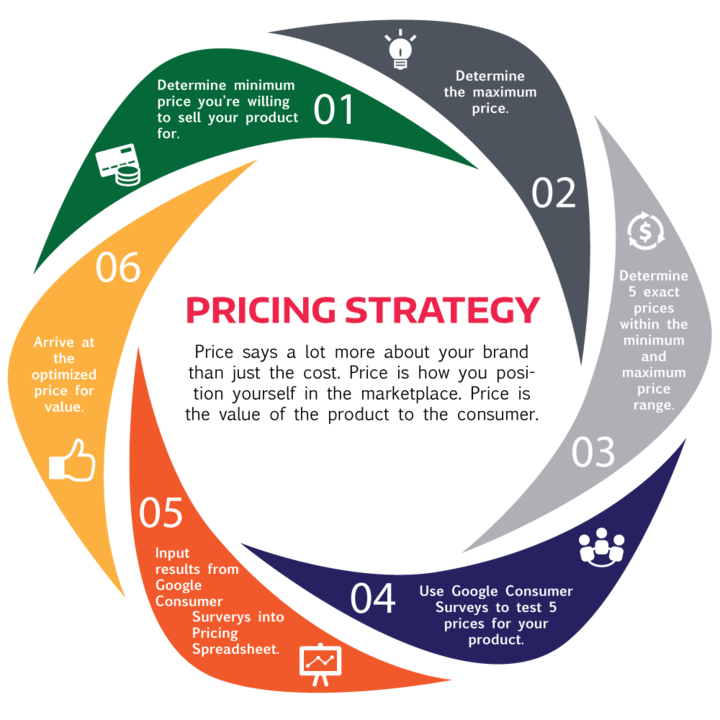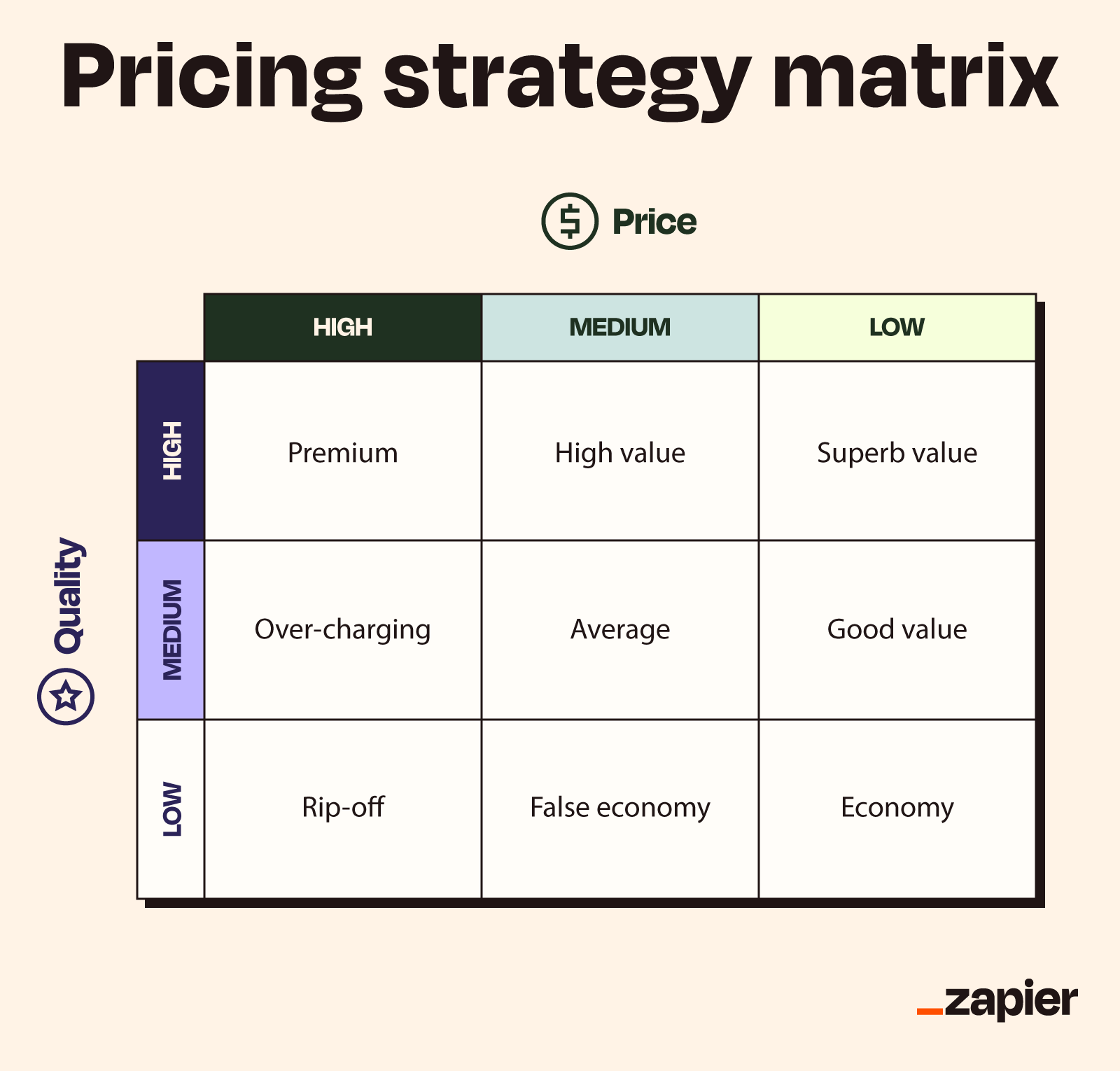How to Evaluate and Enhance Your Pricing Strategy for Better Outcomes
How to Evaluate and Enhance Your Pricing Strategy for Better Outcomes
Blog Article
Optimize Revenue With Proven Rates Approach Methods
Strategies such as value-based pricing, dynamic pricing, and thorough market evaluation can substantially improve a company's financial performance. Comprehending consumer perception and leveraging data analytics for agile pricing modifications are necessary elements of this approach.
Recognizing Client Understanding
Recognizing customer perception is critical for establishing efficient prices strategies. It influences just how consumers review a product's worth, high quality, and overall good looks. Organizations need to acknowledge that consumers commonly base their readiness to pay not entirely on the item's intrinsic attributes however likewise on psychological elements, including brand credibility, social standing, and perceived deficiency.

In addition, firms need to consider the function of pricing psychology, such as charm prices or rate anchoring, which can dramatically influence customer behavior. Understanding these perceptions makes it possible for companies to frame their pricing strategies in a fashion that lines up with consumer assumptions while making best use of success.
Integrating consumer assumption right into rates techniques not just help in establishing affordable prices however also fosters brand loyalty, as consumers really feel understood and valued. Eventually, a nuanced understanding of client assumption can result in sustainable revenue growth and boosted market positioning.
Studying Market Trends
To develop an efficient pricing strategy, evaluating market trends is important for organizations aiming to remain affordable. Understanding the dynamics of market changes allows firms to make informed decisions regarding rates adjustments, item launches, and resource allocation - Pricing Strategy. By monitoring consumer habits, financial indications, and sector advancements, organizations can identify patterns that inform their rates structures
Key parts to consider when examining market trends include need flexibility, seasonal fluctuations, and arising modern technologies. Need elasticity aids companies evaluate exactly how price modifications may affect consumer buying choices. Seasonal patterns can offer understandings into optimum prices during peak and off-peak durations, permitting for critical discounting or promotional rates. Additionally, watching on technological advancements can help identify possible threats or opportunities that might impact pricing methods.
Utilizing data analytics devices can improve the precision of pattern analysis, supplying useful insights that promote active decision-making. Business should likewise consider performing routine marketing research to validate assumptions and adjust to progressing customer preferences. By leveraging these understandings, companies can not just optimize their pricing methods yet additionally reinforce their general market placement, making sure lasting success and development.
Competitive Pricing Techniques
An affordable pricing approach is crucial for companies intending to obtain an edge in a crowded industry. By evaluating rivals' pricing frameworks and market positioning, business can strategically establish their costs to bring in customers while preserving productivity. This method calls for an extensive understanding of both the affordable landscape and consumer understandings of worth.
One efficient method is cost matching, where an organization supplies to beat a competitor or match's rate. This strategy can improve consumer loyalty and urge sales, especially in price-sensitive markets. In addition, infiltration pricing can be employed to record market share by initially establishing rates lower than competitors, enticing clients to try the product and cultivating brand recognition.
Additionally, services can execute mental pricing strategies, such as rates things simply below a round number (e.g., $9.99 as opposed to $10 - Pricing Strategy.00) This can create the understanding of a far better offer, influencing customer habits
Inevitably, a successful competitive pricing technique stabilizes the demand to remain attractive to consumers while ensuring that the pricing version aligns with the business's total goals. Frequently changing and reviewing prices in feedback to market changes and competitor activities is necessary for continual success.
Value-Based Pricing Methods
Value-based prices techniques focus on establishing rates mostly based upon the viewed value of a services or product to the consumer, instead of only on manufacturing costs or competitor prices. This method requires a deep understanding of client requirements, preferences, and the unique benefits that the product and services deals. By identifying the particular worth motorists that resonate with clients, businesses can create rates techniques that show the true worth important source of their offerings.
To apply value-based pricing efficiently, business have to involve in thorough market research study, including customer surveys and emphasis groups, to collect insights into consumer perceptions. Furthermore, businesses should section their customer base to customize prices methods that line up with various worth understandings throughout sectors.
Interaction plays a crucial function in value-based prices; business have to express the unique value proposal plainly to validate the cost factor. Additionally, recurring evaluation and adjustment are crucial, as consumer understandings of worth may change over time due to market dynamics or competitive activities. By prioritizing value in rates approaches, companies can boost customer fulfillment, improve commitment, and eventually enhance profits.
Dynamic Pricing Versions

Dynamic rates leverages sophisticated formulas and data analytics to monitor rival rates, customer actions, and stock degrees. By dynamically adjusting prices, organizations can maximize revenue, take full advantage of profit margins, and react promptly to adjustments in the market. Airlines often use this model to change ticket costs based on variables like staying seats, time till separation, and competitor prices.
However, the application of dynamic prices must be approached with caution. Transparent interaction with clients is important to preserve trust fund and avoid understandings of unjust rates practices. Furthermore, companies should ensure that their rates formulas are not extremely complex or opaque, as this can result in client dissatisfaction.
Eventually, when carried out thoughtfully, dynamic prices designs can offer services with a considerable competitive advantage, allowing them to profit from market chances while dealing with customer expectations in a rapidly altering economic landscape.
Conclusion

Techniques such as value-based prices, dynamic pricing, and comprehensive market analysis can significantly boost a firm's economic efficiency. Seasonal patterns can give insights into optimal pricing during optimal and off-peak durations, permitting for calculated discounting or advertising next rates.Dynamic rates leverages innovative algorithms and data analytics to keep an eye on competitor prices, consumer behavior, and supply degrees. By comprehending consumer assumption, evaluating market patterns, and using competitive rates strategies, companies can properly align their prices with consumer expectations. Furthermore, value-based rates and vibrant prices models enable organizations to respond agilely to market fluctuations.
Report this page